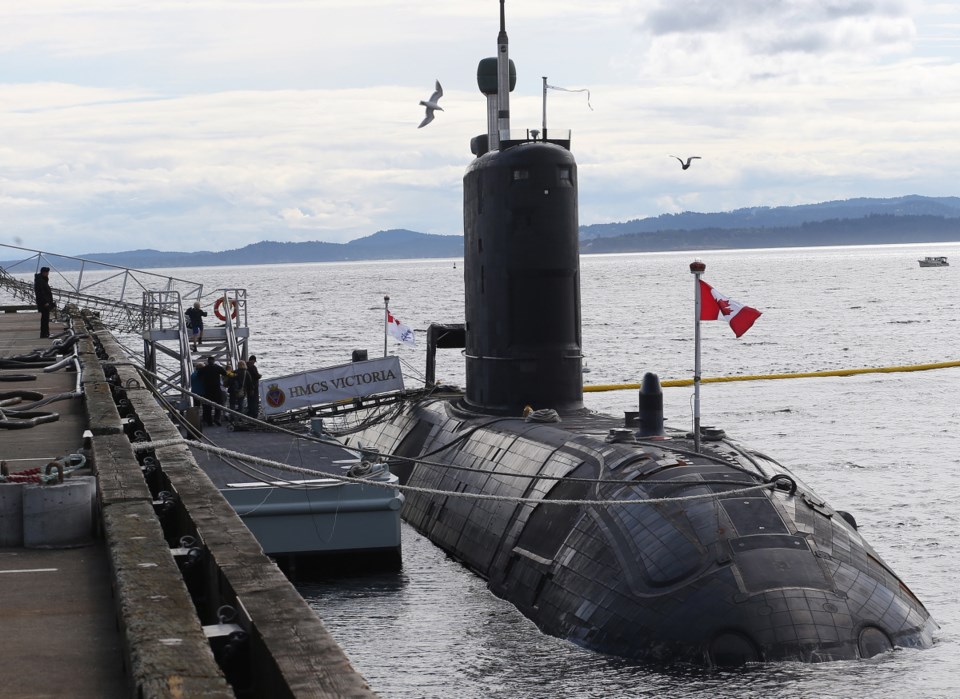OTTAWA — The navy’s submarine fleet will have to be retired in the next decade unless the federal government opts to spend billions to upgrade the ships, according to Defence Department documents.
The documents show the first submarine, HMCS Victoria, is scheduled to reach its end of service life in 2022. The other three vessels will follow until the last, HMCS Windsor, retires in 2027.
The documents, released to the Canadian Press through the Access to Information Act, peg the cost of extending the lives of the submarines at between $1.5 billion and $3 billion, depending on how long the vessels remain in service and what technical upgrades are made.
They don’t specify when a decision needs to be made, but work needs to begin by 2020 to prevent a gap.
Military officials have recently praised the submarines. Royal Canadian Navy commander Vice-Admiral Ron Lloyd described the vessels in June as “essential” to the navy’s ability to protect the country and help NATO, an assessment that was echoed by defence chief Gen. Jonathan Vance.
“As Canadians, I think we want to know who’s operating on, above and below our water from a sovereignty perspective,” Lloyd said. “The one strategic asset that allows you to understand what’s operating below the water is a submarine. Nothing else can replace that.”
But any investment is likely to stoke controversy. The submarines have been plagued by technical problems since they were bought used from the United Kingdom in 1998 for what the Chrétien government described as a bargain $750 million.
While naval officials say they have managed to fix many of the problems and have started using the submarines in earnest, two were docked early this year over concerns about shoddy welding that prevented them from diving. Another had to be repaired after breaking down en route to a training exercise in Norway in June.
At the same time, the government is preparing to shell out billions for new fighter jets while the army has been clamouring for cash for new light and heavy trucks. Half of its current truck fleet has been parked because of age and maintenance costs.
The navy is also waiting to see how much money it will get from the government for new surface warships, which are slated for construction at the same time the submarine life extension would take place.
The ship budget was previously set at $26 billion for up to 15 vessels, but recent estimates have put the cost much higher.
Retired commodore Eric Lerhe, a senior fellow at Dalhousie University, said the navy has been trying to start a conversation about buying new submarines for some time. However, any purchase would take at least a decade, which is why a life extension to the existing fleet is considered necessary.
The document said that depending on the amount of work done, an extension could extend the lives of the submarines by between six and 18 years.
The federal government is developing a new defence policy, which will spell out what jobs the military will be expected to perform. That will have direct bearing on the types of equipment purchased in the coming years.
Lerhe acknowledged the submarine fleet has had its teething problems. But he said actions by Russia and China, plus the growing importance of the Arctic and the fact Canada has one of the longest coastlines in the world makes the submarines essential. He argued the estimated cost of the upgrades isn’t astronomical.
“What’s it going to cost to send peacekeepers to Mali?” he said. “In Afghanistan, the cost was $2 billion per year.”



